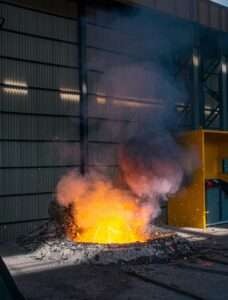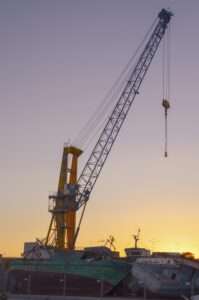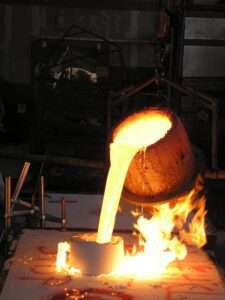
UFlex Ltd. – Stock Analysis (2024-25)
In this article we will try to analyze UFlex Ltd. based on previous six years of financial statements viz Balance sheet, Profit and Loss statement and Cash flow statement. With this fundamental analysis we will try to gain insight into the business activities, financial health, operating efficiency and profitability of the company and finally try to derive the intrinsic value of the stock using Discounted Cash Flow method and the price at which the stock becomes attractive for long term investment. This article is divided in three sections as listed below :-
Section 1: Qualitative Fundamental Analysis comprising of General Introduction, Business overview dwelling into Business Model, Strengths and Weakness, Long Term Sustainability and finally the competitors.
Section 2:Quantitative Fundamental Analysis on Financial Health, Operating Efficiency And Profitability.
Section 3: Calculation Of Intrinsic Value.
General Introduction
Dated: 21 Mar 25
Company: UFlex Ltd.
CMP: Rs. 487.00
Market Capitalisation: Rs. 3,499.73 Cr.
Share Holding Pattern:

Promoters: Ashok Chaturvedi
Peers: EPL India, TCPL Packaging, Polyplex Corp
Fundamental Analysis Of UFlex Ltd.
Qualitative Analysis
General Introduction:
UFlex Ltd. is a leading Indian multinational in flexible packaging solutions, founded in 1985 by Ashok Chaturvedi. Headquartered in Noida, India, it began as a pioneer in manufacturing flexible polymer-based packaging and has since grown into one of the world’s largest integrated packaging companies. Produces flexible packaging materials (laminates, pouches, films) for industries like food & beverages, personal care, pharmaceuticals, and agriculture. Its clients include global brands like Nestlé, PepsiCo, Unilever, and Procter & Gamble. Expanded into chemicals, cylinders, holography, and automotive glass (through its subsidiary, Asahi India Glass Ltd.). It has manufacturing plants across India, USA, Mexico, Poland, Egypt, UAE, and Indonesia.
Business Overview:
UFlex Limited, founded in 1985 by Ashok Chaturvedi as a manufacturer of printing cylinders, and today the company has strategically located state-of-the-art manufacturing facilities across 9 countries with a workforce of over 10,000. With its diverse product portfolio, UFlex serves as one-stop-shop flexible packaging solution provider, serving varied sectors spanning FMCG, consumer product goods, pharmaceuticals, building materials, automobiles, and more. Evolving consumer tastes in packaged food and beverages, the rise of e-commerce, and the increase in food storage technologies will fuel the demand for flexible packaging solutions in the coming years.
Verticals:
The company operates the following vericals:
- Packaging Business
- Chemicals Business
- Holography Business
- Engineering Business
- Printing Cylinder Business
Packaging Business: The company manufactures a wide range of innovative products to meet the needs of global markets. These products are listed below:
- PET Chips
- Packaging Films – UFlex manufactures a wide variety of flexible packaging films like BOPET films, BOPP films, CPP films, high barrier metalized films, Asclepius™ PCR films, Alox coated films, speciality films.
- Flexible Packaging – The company offers products like flexible packaging laminates, pre-fabricated pouches, easy-tear sachets, big bags, block bottom bags, premium shower-proof bags, pharmaceutical packaging, FlexiTubes and FlexFresh™ modified atmospheric packaging etc.
- Aseptic Packaging – The company manufactures asceptic liquid packaging under the brand name ASEPTO.
Chemicals Business – UFlex’s Chemicals business offers a wide range of products including printing inks, ink binders, water-based, solvent-based and solvent-free laminating adhesives, UV and LED inks and coatings, speciality chemicals such as polyols, primers, special effect coatings etc.
Holography Business – UFlex’s Holography business offers products including holograms, security documents, holographic films, holographic aluminum lidding foil, holographic PVC blister, paper and board transfer, holographic thermal films, sequins films, glitter films, hot melt foil films, hot stamping foils and registered lens technology.
Engineering Business – UFlex’s Engineering Business is among the leading manufacturers of premium packaging, printing, recycling and allied machines.
Printing Cylinder Business – Printing Cylinders Business offers different products that include electromechanically and laser engraved rotogravure cylinders for printing, laser engraved coating cylinders for extreme high and low gsm, embossing cylinders, robotic laser engraved specialized rotogravure cylinders, flexographic polymer printing plates and flexographic elastomer printing plates.
The company has presence across all verticals of the packaging value chain. This holistic approach enables seamless collaboration between these units, fostering cross-functional expertise and resource sharing.
Its “produce locally, sell locally” strategy has significantly reduced lead times, maintained rigorous quality control, and fostered strong, enduring relationships with its clients worldwide.
Step Towards Sustainability:
A circular economy is a system solution that impacts the environment, the economy, and society. The current system we live in is a ‘linear economy’ whereby we ‘take, make, use and discard’ resources. In contrast, a circular economy aims to extend the use period of resources, minimize waste, and cycle back any waste as inputs into the same or other processes. Unlike items that remain in usage for a long time, packaging is typically used and discarded quickly. This rapid turnover leads to significant environmental impact.
As a step towards sustainability the company has prioritized the development of solutions that ensure plastic materials remain within the economic loop while minimizing their environmental impact. Its focus on product and process innovation aims to reduce the use of virgin materials, enhance material recyclability, and significantly cut down emissions that contribute to climate change. Its advanced post-consumer waste recycling units efficiently convert complex, multi-layer plastic waste into reusable granules.
The granules are used to make several industrial and household products like flowerpots, outdoor furniture, dustbins, paver tiles, road dividers, etc. Replicating its efforts in India, UFlex has established recycling plants in Poland and Mexico to process post-consumer multi-layer mixed plastic waste into granules. Additionally, the company operates a post-consumer recycling (PCR) plant in Egypt that specializes in recycling post-consumer PET bottles using advanced mechanical recycling technology.
UFlex has invested in an advanced enzymatic delamination technology to enable aseptic packaging recycling. Enzymatic delamination utilizes enzymes to break down the bonding between different layers of the packaging materials, separating individual layers such as paper and polyethylene/foil laminate which can be reused in the production of aseptic packaging, thereby contributing to the circular economy. UFlex operates a state-of-the-art recycling facility for aseptic packaging in Gwalior, MP, India.
The company has developed super-earth-friendly films using FlexzymeTM technology are enzyme-based and embody all the qualities of a good packaging film like sturdiness and flexibility. When the packaging made from this film comes in contact with soil, it begins to degrade into water, carbon, and biomass, leaving no polluting impact.
Future Outlook for the company:
Packaging stands as a crucial element integral to every product. In the dynamic and fiercely competitive business environment of today, achieving a competitive edge is paramount for product differentiation and success. Packaging not only serves marketing purposes but also fulfills several critical functions, including information dissemination, product protection, convenience, and security enhancement. This comprehensive functionality underscores the pivotal importance of packaging in modern business strategies. Today the packaging sector stands as the fifth largest sector in the India.
The demand for packaging in India has expanded drastically, driven by rapid growth in consumer markets, particularly in processed food, personal care, and pharmaceutical industries. Factors such as rising population, increasing income levels, and changing lifestyles are driving consumption across various industries, leading to higher demand for packaging solutions. Additionally, the rural sector’s demand for packaged products is fueled by growing media penetration through the internet and television.
Packaging is a significant sector in both India and globally, uniquely interconnected with the FMCG industry. The demand for flexible packaging is growing, aligning with key consumer trends, and addressing future priorities like e-commerce, food waste reduction, and carbon footprint reduction. The industry outlook is positive, driven by rising disposable incomes, favorable demographics, increased brand consciousness, the growth of e-commerce, and improved FDI investment norms in retail and other sectors.
Challenges to the Packaging Industry:
The challenges faced by packaging industry include fluctuating raw material prices, dynamic regulatory standards, environmental concerns, and limited effective recycling of mixed plastic waste. The volatile trend in crude oil prices and demand for polymers in competing applications has increased pressure on input costs.
****************************************************
Quantitative Analysis
Leverage Ratios

Observations:
- The debt on the company has increased during the period. In absolute terms the debt has increased by 225%. However, it is still under manageable limits.
- The company has maintained a healthy interest coverage ratio throughout the period in consideration.
Operating Ratios

Observations:
- Company has maintained a positive working capital turnover ratio during the period.
- There is no change in the receivable turnover ratio.
Profitability Ratios

Observations:
- The company has maintained an average PAT margin of 4.15% during the period. Except for 2024 the company maintained a positive PAT figure.
- The average ROCE for the period is 11.23%. ROCE is calculated based on the shareholder’s equity, however, for a new investor it has to be worked out based on the Enterprise value. At Enterprise value ROCE works out to be 16.05% which is better than Long Term Government of India Bond Coupons.
****************************************************
To learn Fundamental Analysis and
Company Intrinsic Valuation
Visit
Intrinsic Analyst – Learning Center.
Also Check out Testimonials of people who joined us in this Investment Journey!!!
****************************************************
Author
Jibu Dharmapalan
SEBI Registered Research Analyst
Registration No. INH000014678
GSTIN: 32AHVPD3247L2Z3
Mobile: +91 9656125475
Click Here To Contact on – Whatsapp or Telegram
Check Intermediary on SEBI Website
If You Like This Content 👇👇👇
Click Here To Join Us on Facebook For Free Live Interactive Discussion And Learning
References:
BSE India – Uflex Ltd. Annual Reports
Flex Ltd. – Investors – Annual Reports
Click Here for Home
FAQs
What is Intrinsic Value?
Ans: When someone invests in an asset, he does so in order to earn money from the business. The investor gets paid over a period of time as long as he is invested in the asset. Now intrinsic value is the present value of all such future cash flows generated by the asset. So logically one should not invest in any asset if the ask price is more than the intrinsic value of the asset.
How is Intrinsic Value of a company calculated?
Ans: For calculating the intrinsic value of a company all its future cash flows are extrapolated based on the past performance of the company, assumptions about the future growth of the company and its terminal value. Once all these are calculated these are brought to the present date based on appropriate discounting rate. The sum of all these gives the intrinsic value of the company. It may be more or less than the market capitalization of the company. If it is more than the market capitalization of the company then the company is said to be undervalued and is a good bet as a long-term investment and vice versa.
How is Intrinsic Value of a share calculated?
Ans: Once intrinsic value of a company is calculated as explained above, it is divided by the total number of outstanding shares of the company. This gives the intrinsic value of a share.
What is Discounted Cash Flow?
Ans: When we have cash flows that are spread over a period of time then Discounted Cash Flow method is used to calculate present value of all such cash flows. The present value depends on the discounting rate used. Usually 10 year Government bond yield rate(risk free rate of return) is used as the discounting rate.
















